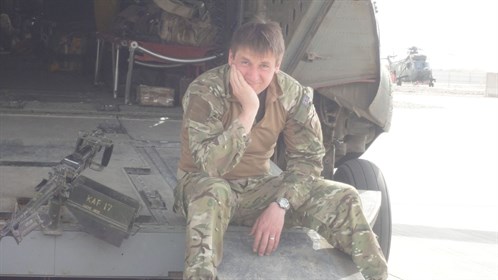28 May 2019
Doctors from UH Bristol contribute to world’s first handbook for child blast injuries
Doctors from University Hospitals Bristol NHS Foundation Trust,
alongside colleagues from the
Paediatric Blast Injury Partnership (PBIP) have written and
launched a life-saving handbook for children severely injured by
explosive weapons.
The Paediatric Blast Injury Field Manual was developed by the
PBIP, a coalition of doctors and experts founded by Save the
Children and Imperial College London, and is designed for medics in
war zones who often lack specialist training. It is the first
comprehensive guide to injuries suffered by children from weapons
like airstrikes, artillery and landmines.
Earlier this month Save the Children partner Syria Relief began
distributing the manual for the first time to emergency units
across northwest Syria, including Idlib and Aleppo. The guide will
be deployed later in the year to other conflict zones including
Yemen and Afghanistan, and is also freely available to download via
the Save the Children website.
Dr Paul Reavley, a former UK military doctor and now a
consultant emergency physician for both adults and children at UH
Bristol, was the lead author on the project. Paul worked with
UH Bristol colleagues Dan Magnus, clinical lead and consultant in
paediatric emergency medicine, and Andy Lockyer, consultant in
emergency medicine, on the handbook, which includes step by step
instructions covering a wide range of scenarios, from resuscitating
children on the battlefield and saving limbs, to rehabilitation and
psychological care.

Paul recently met with Syrian
clinicians in Turkey to understand their challenges and to help
improve the care to those affected and injured in the ongoing
conflict. Speaking about the importance of the handbook,
Paul said:
"I've seen medics overcome with emotion when children
come in with blast wounds. In a war zone,
you're mentally prepared for the adults. You expect to
treat injured soldiers, and even civilian adults. But the sights
and sounds of a young child torn apart by bombs are something
else.
"I remember in Afghanistan having to resuscitate an
8-year-old girl, who had three limbs blown off by an improvised
explosive device (IED). She was about the same age as my own
daughter. I'm a trained paediatrician, but that connection shook me
hard. And it hits you just when your mind needs to be at its
clearest.
"Until this manual, there really hasn't been anything to prepare
doctors for dealing with the horror of children injured by blasts.
For the first time it tackles psychological, as well as the
physical, challenges. It's not just a guide to practical procedures
- it's a crucial emotional crutch."
Speaking about UH Bristol's role in global health, Dan
said:
"As a consultant in the children's emergency department here in
Bristol I know how privileged we are to be able to provide world
class emergency care for children and the safety and quality of
care for the children and families of Bristol and the south west is
our primary concern.
"However, we also have a responsibility to help to improve child
health globally too. Working with Paul, who led this project, and
other UH Bristol colleagues to support medical staff looking after
children in incredibly difficult circumstances in Syria has been a
humbling experience. It is an important reminder of how amazing our
staff are here at UH Bristol and what an important contribution our
children's hospital has to make in a global context."
Andy added:
"This is an incredible achievement for the team to have created
something that is so accessible and intuitive to help save
children's lives around the world. It addresses every aspect of the
care of the child, and will make a huge difference. We have a moral
responsibility as doctors to engage global healthcare issues,
and to provide support where we can."
Most medical studies are based on injured military personnel,
making definitive estimates for the scale of blast injury in
children almost impossible. But existing research, while limited,
suggests children suffer unique patterns of injury and are far more
likely to die from blast wounds than adult conflict casualties.
Major General Michael von Bertele CB OBE FRCP, former
Director General of British Army Medical Services and a member of
Paediatric Blast Injury Partnership (PBIP), said:
"The sad reality is most medics just haven't been trained to treat
children injured by blasts. Nearly all the textbooks and procedures
we have are based on research on injured soldiers, who are usually
fit adults.
"We know children's bodies are different. They aren't just small
adults. Their skulls are still not fully formed, and their
undeveloped muscles offer less protection, so a blast is more
likely to damage their brain and lungs or tear apart organs in
their abdomen, even when there's no visible damage.
"And when children suffer severe injuries to their legs and
arms, it takes highly specialised knowledge to know where to
amputate so that you can factor in future growth. Without that,
children are left with even worse disabilities, and often
intractable pain for life."
Notes to editors:
Media contact: Matt Thackray: 01173423629 matthew.thackray@uhbristol.nhs.uk
 BACK TO NEWS
BACK TO NEWS










